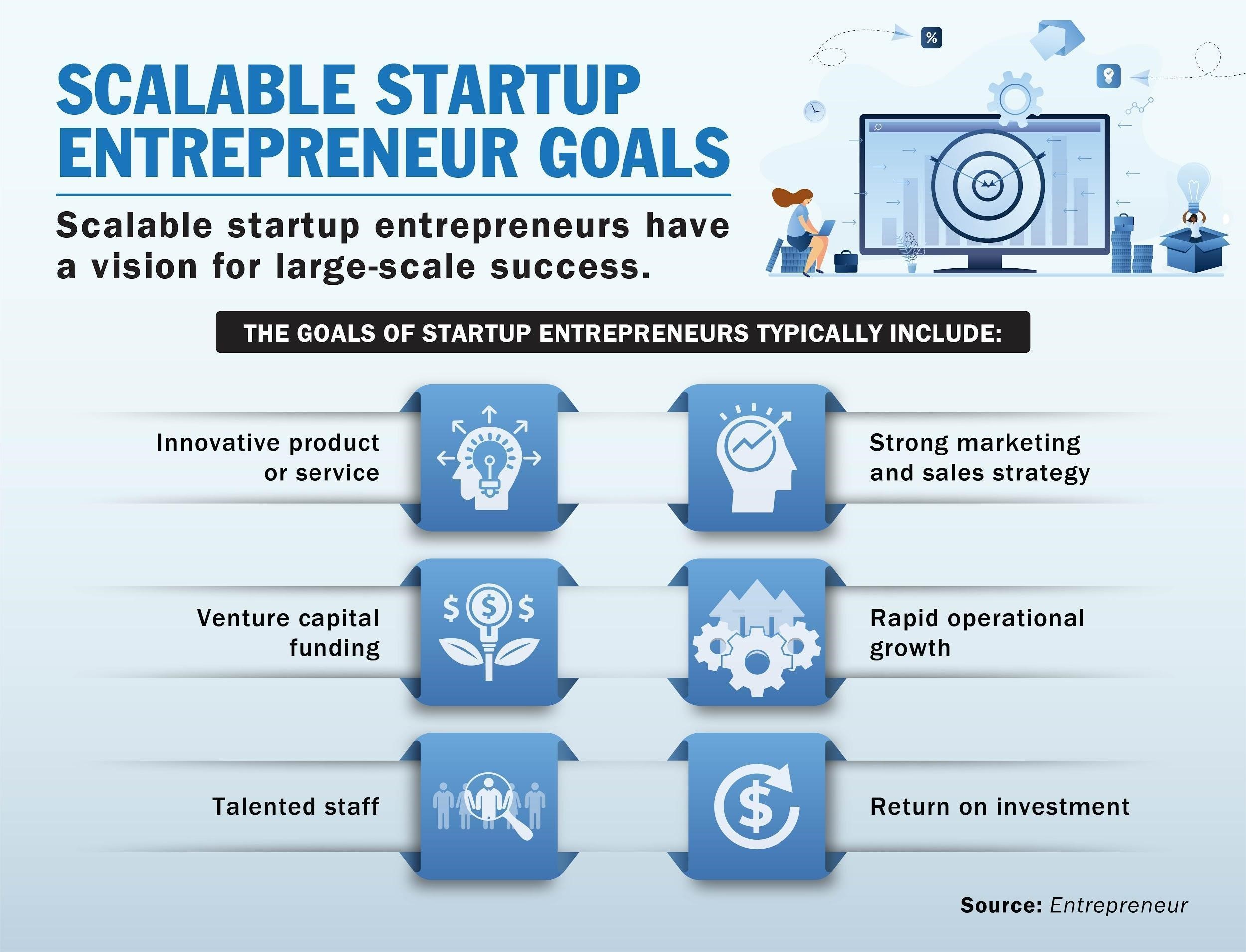What kind of business are entrepreneurs involved in – The past few years have seen a rise in entrepreneurial opportunities obtainable to women who wish to lead and achieve their very own businesses. According to American Express’s “2019 State of Women-Owned Businesses” report, the variety of women-owned businesses grew 21% between 2014 and 2019, compared to a 9% development in companies overall. Another encouraging signal: companies owned by women of colour grew by 43% in the same time period.
While this does not necessarily recommend a level playing area, it does make clear that, throughout the world of entrepreneurship, there is extra room than ever for ladies spanning all vocational backgrounds and educational ranges. Women hoping to succeed in an enterprise may help their possibilities by understanding the four various sorts of entrepreneurship.
What Does It Mean to Be an Entrepreneur?
An entrepreneur is outlined as anybody who founds or organizes a business and then continues to be an energetic participant within the operation of that enterprise. In different phrases, an entrepreneur is anybody who launches and continues to run their own company.
Investopedia notes that entrepreneurs sometimes finance their ventures via loans from investors, their own savings, or cash from their households. This highlights the importance of having a strong financial plan in place, in addition to a radical understanding of the risks inherent in the enterprise.
What kind of business are entrepreneurs involved in Entrepreneurial Examples?
- Whitney Wolfe Herd, the founder of Bumble. Fast Company explains that the Bumble courting platform is distinct from rivals as an end result of it requires ladies to provoke interest. Wolfe Herd started her company not just to empower girls in their social lives, but additionally in the know-how business and society generally. Her firm is working to counter the “Brotopia” that dominates the web, a goal that is evident within the company’s hiring insurance policies: 82% of Bumble workers are women.
- Naomi Hirabayashi and Marah Lidey, two girls of colour who founded the tech firm Shine. Women’s Health describes Shine as “a text-messaging service that sends subscribers counsel on every little thing from discovering balance to dealing with a poisonous pal.” The ladies were motivated to start the service by their reliance on one another as close coworkers, or “work wives,” who frequently confided in and sought private and professional advice from one another. In less than two years the texting service attracted greater than 2 million users in 189 nations.
Becoming an Entrepreneur
While there is no one “right” approach to turning out to be an entrepreneur, the overall career trajectory often looks something like this:
- Develop an idea for a singular or in-demand enterprise.
- Learn about and achieve experience in a variety of enterprise roles, together with finance and accounting, administration, and advertising.
- Make a marketing strategy and set up a source (or sources) of funding.
- Recruit talented employees and managers with the abilities needed to develop, check, implement, help, and keep the company’s products.
- Devise strategies for launching the product or service, and for attracting and retaining clients.
- Once the corporate is established, search out methods to develop revenue by increasing into new areas and product traces.
As the company matures, the founder’s function is prone to include each long-term strategic planning and short-term tactical administration and financial selections. Pursuing a Master of Business Administration (MBA) or related management-focused degree supplies girls entrepreneurs with the talents they’ll succeed at every step of the method as they notice their enterprise targets.
Learn More About Entrepreneurship
What Are the 4 Types of Entrepreneurship?
Anyone excited about the beginning and operating their own business ought to think about which entrepreneurial mannequin they prefer: small enterprise, scalable startup, giant company, or social entrepreneurship.
Small Business
Small companies characterize the overwhelming majority of U.S. entrepreneurial ventures. A small business might be any firm, restaurant, or retail store that’s launched by a founder, without any intention of rising the business into a sequence, franchise, or conglomerate. For instance, opening a single grocery retailer falls beneath the small enterprise model; creating a nationwide chain of grocery stores doesn’t. Small business entrepreneurs usually make investments in their own money to get their corporations off the bottom, and so they only make money if the enterprise succeeds.
Scalable Startup
Scalable startups are less frequent than small companies, though they have the inclination to attract a lot of media consideration. These businesses begin on a really small scale, often as simply the seeds of an idea. This germ is then nurtured and scaled, typically via the involvement of door buyers, till it becomes something much larger. Many Silicon Valley tech firms fall beneath this model; they start in an attic, garage, or house office before finally scaling into giant corporate headquarters.
Large Company
Sometimes, entrepreneurs work in the context of a larger, established company. Imagine that you simply work at a large auto manufacturing firm. Through cautious market analysis, you realize there is an excessive demand for bikes, and that your organization has most of the applied sciences and processes in place to branch into bike production. You go to your boss and ask for the funding to launch a brand-new motorcycle division, and you’re accredited. This is an example of what the large company entrepreneurship mannequin might appear to be in applying.
Social Entrepreneurship
The last model to contemplate is social entrepreneurship, which seeks progressive solutions to community-based issues. According to Investopedia, social entrepreneurs “are keen to take on the chance and effort to create positive modifications in society via their initiatives.” In other phrases, a social entrepreneur launches an organization that’s fundamentally about enacting constructive social change, not merely producing earnings. The social change in question might pertain to environmental conservation, racial justice, or philanthropic exercise in an underserved group.
Small Business Entrepreneurship
According to the Small Business Administration (SBA), more than 99% of all U.S. businesses fall into the small business category.
Defining Characteristics of Small Business Entrepreneurship
What distinguishes small enterprise entrepreneurs from different kinds of entrepreneurs? There are a couple of distinct traits:
- Small business entrepreneurs focus initially on a single product, market, or locality. While in their startup phase, the entrepreneurs probably don’t have plans to increase the company.
- The initial goal of small enterprise entrepreneurs is to make revenue, although even in its early phases, the enterprise could also be motivated by the entrepreneur’s want to impact social change.
- Most small companies are both self-funded or funded via small enterprise loans. Outside traders and enterprise capitalists are very rarely involved.
- These are among the best challenges small business entrepreneurs face:
- Ensuring gradual money circulates without relying on third-party investments
- Finding time for household and friends
- Staying abreast of know-how and market changes that affect the business
- Devising an advertising technique to draw the company’s goal audience
- Maintaining solid popularity for their brand
- Keeping an eye fixed on the competition
What Industries Do Small Business Entrepreneurs Work In?
While small enterprise entrepreneurs work throughout a spread of various fields, lots of them function within the context of “mom and pop” brick-and-mortar outlets: hairdressers, bakers, restaurateurs, and retail store owners.
Additionally, small enterprise entrepreneurship can embody consultants and inventive professionals, similar to copywriters, marketers, or graphic designers who go into business for themselves. Service trades, corresponding to electricians and plumbers, additionally fall underneath this class.
Find Out More About Small Business Entrepreneurship

Scalable Startup Entrepreneurship
The scalable startup entrepreneurship model at first resembles a small business, however, differs in its intentions for long-term evolution.
Key Characteristics of Scalable Startup Entrepreneurship
There are a couple of traits that distinguish the scalable startup mannequin from the small enterprise model, as well as from other kinds of entrepreneurship.
- Like small enterprise entrepreneurs, scalable startup entrepreneurs begin their corporations on a modest scale. But not like small business entrepreneurs, scalable startup entrepreneurs have a vision for progress from the outset.
- Scalable startup entrepreneurs look not simply to make income but also to generate revenues they can invest again into the enterprise, fueling growth.
- The most typical way to fund a scalable startup is through the pursuit of venture capital.
- Scalable startup entrepreneurs face several distinctive challenges, as Startup Nation describes:
- Attracting investors and elevating enterprise capital
- Recruiting gifted managers and workers without impinging on money move or incurring debt
- Ensuring the business plan is versatile and sufficient to accommodate shifting markets and new technologies
- Planning and implementing an infrastructure for the business that is inexpensive to launch but capable of rising without disrupting the core business
- Realizing aggressive progress targets to satisfy investor expectations and appeal to future funding
The group the entrepreneur assembles to get the enterprise off the bottom and implement its development technique has to own all requisite skills, but extra importantly the members should share the founder’s vision for the company.
Noteworthy Examples
Melanie Perkins, Canva
In 2013, Perkins launched Canva with a simple premise, as CNBC explains: Make graphic design accessible to everybody. Today, the company is often talked about as identical breath with massive tech giants, and it is valued at more than $3 billion. Perkins first envisioned the corporate whereas in faculty, the place she helped other students learn to use design software programs. She knew there was an easier way to make designing accessible.
Working with Canva co-founder Cliff Obrecht, who is now Perkins’ fiance, she launched an online college yearbook design firm at the age of 19. The couple had very little enterprise experience and few sources, yet they created a website that allowed college students to collaborate and design personalised profile pages and articles for yearbooks that the pair would print and deliver to varsities themselves. Seven years later, that enterprise continues to thrive. Now, at the age of 26, Perkins has made her dream of a free, easy-to-use design platform a reality.
Ayah Bdeir, LittleBits Electronics
You’re never too young to start exploring the worlds of electronics and engineering. That’s the premise behind LittleBits, which provides STEM-centric (that is, science, know-how, engineering, and math) constructing blocks geared toward empowering youngsters and introducing them to electronics careers. Bdeir has discovered nice success; after beginning small, she now sells her products in additional than 100 nations. She got the idea for the corporate while a pupil at the Massachusetts Institute of Technology Media Lab, the place she earned her master’s degree and took part in the Media Lab’s Lifelong Kindergarten project as the Observer describes.
LittleBits relies on the concept of learning by way of play: Bdeir started by taking prototypes to Maker Faires, where tinkerers and do-it-yourselfers share their innovations. After lines of youngsters started forming at her sales space, she realized children were engaged by the devices they created and would ask query after query about how they worked. Bdeir was able to convert this “lightbulb moment” right into a successful enterprise with a necessary social message: Women belong in STEM fields as much as males do.
Learn More About Scalable Startup Entrepreneurship
Large Company Entrepreneurship
Fewer than 1% of all U.S. companies qualify as large businesses, however, due to their scope and effect, these companies are often well-known to the public.
Defining Large Company Entrepreneurship
The main factor that distinguishes this mannequin is that somewhat than building a new business entity from scratch, it’s the creation of a brand new business entity within an existing firm.
- Large firm entrepreneurs handle the needs and alternatives of a present business via innovation. This may embrace a new product line or division.
- Large company entrepreneurs look to branch into new customer markets, broadening the reach of an established enterprise.
- Large firm entrepreneurship might entail the acquisition of recent companies and resources or investment into analysis and development.
- The key to success for big company entrepreneurs is sustainable development in the lengthy run, so the major challenge to their success is to anticipate and keep away from obstacles to growth:
- Ensuring that the firm’s new and innovative products are first to market
- Protecting and growing the market share of present products whereas promoting the brand new offerings
- Building a cohesive corporate culture that’s simple for newly acquired organizations to adopt
- Overcoming the inertia that can prevent giant companies from appearing and responding to changing markets and progressive technologies quicker than the competition
- Failing to scale sustainably (growing an excessive amount, too soon)
Major Examples
The tech company has used acquisitions corresponding to YouTube to amass an enormous tech portfolio beyond search, which remains tremendously profitable but lacks the steep progress projection of different technologies. This strategy permits the firm to be active in many totally different markets, together with real-time traffic (Waze), smartphones (Motorola Mobility and HTC’s Pixel Smartphone Division), and well-being wearables (Fitbit), as CB Insight describes. Two latest Google acquisitions are the customer service software program suite Onward, which the company acquired to realize a share of the rising market for automated customer support, and Tenor’s GIF search engine, which broadens the firm’s search portfolio and attracts much-desired tech viewers: professional internet builders.
CVS
CVS is another company that has used acquisitions to increase its attain to new shopper markets. One important example is CVS’s acquisition of the Target pharmacy chain, including more than 1,600 pharmacies and clinics. However, the company’s strategy goes beyond development to encompass a reinvention of the healthcare trade, as famous by its 2018 acquisition of insurance firm Aetna. A key to its technique is the conversion of CVS pharmacies into “HealthHUBs,” as the Hartford Courant explains. CVS envisions the acquisition as a means for it to capitalize on basic modifications in how people obtain healthcare: a broader role for pharmacists within the provision of main healthcare providers.
Netflix
While Netflix is usually an acquisition-light firm, it has broadened its reach through numerous creative ventures. One instance is its acquisition of StoryBots, which proved instrumental in Netflix building out its children’s programming lineup.
Additional Resources

Social Entrepreneurship
Social entrepreneurship has emerged as businesspeople consider the effect their company has on the world, past mere income and losses.
What Is Social Entrepreneurship?
The main issue that distinguishes social entrepreneurs from the opposite kinds of entrepreneurs is their mission. These entrepreneurs are targeted at solving an issue in their neighbourhood or furthering some kind of social change. Their goal goes past the bottom line.
Some further elements to consider:
- Most examples of social entrepreneurship take a nonprofit construction. Money that’s generated is put toward advancing the company’s mission and sustaining essential overhead however not necessarily toward corporate progress or expansion.
- Social entrepreneurship usually involves alternative types of fundraising, which can include grants, sponsorships, or small-donor fundraising inside the neighbourhood.
- The World Economic Forum identifies social entrepreneurship as a robust way to apply market-driven approaches to handle social problems. However, regardless of their success at finding progressive and practical solutions, social entrepreneurs face severe challenges:
- Innovation requires experimentation, however funding for social entrepreneur projects focuses on outcomes, so there’s little incentive to pay for unproven approaches.
- All enterprises require a gentle move of capital, but social entrepreneur initiatives tend to offer investors with decrease returns than other opportunities.
- Relations between social entrepreneurs and buyers can become strained by conflicting goals and a scarcity of monetary transparency.
Notable Examples
Shiza Shahid, founder of the Malala Fund
Shahid is a Pakistani entrepreneur who launched the Malala Fund to advertise academic opportunities for ladies, specifically those from disadvantaged communities. The New York Times reports that after co-founding the Malala Fund with Nobel laureate Malala Yousafzai, Shahid started an investment fund for mission-driven startups. Most recently, Shahid and two partners launched a line of cookware for the “modern multi-ethnic American kitchen.”
Audrey Cheng, founder of Moringa School
Cheng’s Moringa School in Nairobi, Kenya, provides local women with alternatives to learn coding and other foundational computer programming abilities. Cheng was motivated to create a varsity by the high unemployment price in Africa, particularly among faculty graduates. Moringa prepares college students with the skills they’ll need for her professions but additionally readies them to thrive within the trendy office.
Jessica Schreiber, founding father of FABSCRAP
Schreiber was nonetheless in her 20s when she based FABSCRAP, a trend recycling firm based mostly in New York City. According to a Forbes profile, the organization “works with 135 labels across the town, amassing and recycling their textile waste, reusing discarded materials to create new clothes or just promoting them at a discounted price.”
Additional Resources
Tips for Women Entrepreneurs
With every passing yr, more and more ladies are finding success in their entrepreneurial ventures. In reality, in accordance with the American Express “2019 State of Women-Owned Businesses Report,” women-owned companies grew from 4.6% to 42% of U.S. companies between 1972 and 2019.
Challenges for Women Entrepreneurs
Such progress is encouraging, but there are still many challenges for ladies in the enterprise. Some of the commonest roadblocks that women entrepreneurs face embody:
- Defying social expectations. Too often, entrepreneurship continues to be thought about a predominantly male undertaking.
- Accessing wanted funds. There stay significant funding gaps for girls entrepreneurs as compared to male entrepreneurs. Women of shade are at the greatest disadvantage of all.
- Building support networks in fields which may be still dominated by men could be tough for girls.
- Balancing business and family remains a challenge for girls, notably for working mothers.
Guidelines for Women Entrepreneurs
For ladies who want to embark on the road to entrepreneurship, some basic suggestions and finest practices include:
- Don’t be afraid to fail; failure is a natural half of the entrepreneurial journey. As long as you study from your failure, it shouldn’t outline you.
- Seek feedback and knowledge wherever possible, together with analysis of key competitors. See what works and what doesn’t work for different ventures in your area.
- Become an avid learner. Continually read books, immerse yourself in new abilities, and commit to being curious.
- Don’t neglect your personal model. Build popularity for thought management. Use public talking opportunities, running a blog, visitors running a blog, social media, or video.
- Don’t surround yourself with flatterers, but also don’t entertain too many doubters in your orbit. Seek counsel from those that can encourage but additionally offer constructive criticism.
- Continue to community and build relationships across your business. Conferences and skilled occasions can be invaluable.
Resources for Women Entrepreneurs
Which Type of Entrepreneur Are You?
For ladies interested in proudly owning and working in their own firm, alternative awaits. One of the first questions to deal with is which of the 4 primary fashions you’ll embrace. Consider the merits of every, one and how they could allow you to get your own entrepreneurial dream off the ground.
Recommendation:
Investopedia, Social Entrepreneur
Start Entrepreneur Online, “Plan Your Business Plan”







Hi there to all, for the reason that I am genuinely keen of reading this website’s post to be updated on a regular basis. It carries pleasant stuff.
Howdy! This post couldn’t be written any better! Reading this post
reminds me of my previous room mate! He always kept talking about this.
I will forward this page to him. Pretty sure he will have a good read.
Thank you for sharing!